The UK’s Type 83 destroyer programme, part of the Future Air Dominance System (FADS), is expected to provide significant contributions to the nation’s shipbuilding sector and broader economy, according to responses from Maria Eagle, Minister of State for Defence, in Parliament on 11 February 2025.
The FADS programme will replace the UK’s current Maritime Air Defence Capability provided by the Type 45 destroyers and is currently in its concept phase. Highlighting the government’s strategic vision, Eagle stated in response to a question from Luke Akehurst (Labour MP for North Durham), “This Government is committed to delivering a thriving shipbuilding sector across the UK, supporting the whole supply chain, from design to repair, systems, and integration.”
When asked whether the Type 83 destroyers’ design, manufacturing, and support would be carried out by UK companies, Eagle emphasised that “it is not yet possible to confirm where these ships will be built as it is subject to due commercial process.” However, she confirmed that the programme would secure jobs in shipbuilding until “at least the mid-2040s, depending on the number of platforms built.”
Work continues behind the scenes for Britain’s new destroyer
Eagle also underscored that the programme will carefully consider the role of UK businesses and communities in its development. “Analysis of supply chain involvement and social value will be conducted during this phase. Social value and sovereign considerations will inform any subsequent investment,” she said, suggesting that the government is keen on maximising both economic and national security benefits.
The Type 83 programme is expected to deliver significant growth for UK shipyards and support the government’s Defence Industrial Strategy. Eagle stated that projects like the Type 83 “demonstrate the breadth of the UK’s shipbuilding skills, innovation, and capability” and will help ensure the long-term sustainability of the sector.
With decisions still pending on the shipyard locations, the Ministry of Defence say it remains focused on securing opportunities that benefit both local economies and sovereign industrial capabilities.
At the UK Defence Journal, we aim to deliver accurate and timely news on defence matters. We rely on the support of readers like you to maintain our independence and high-quality journalism. Please consider making a one-off donation to help us continue our work. Click here to donate. Thank you for your support!


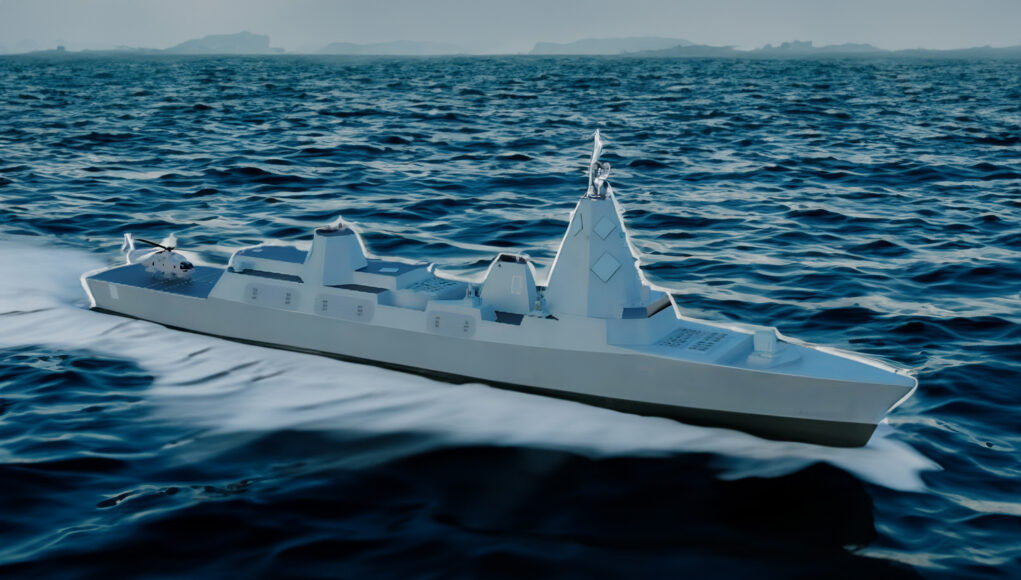
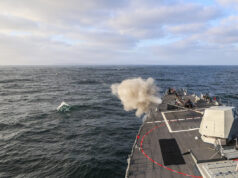
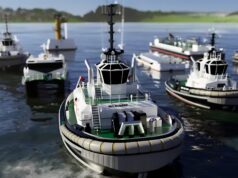
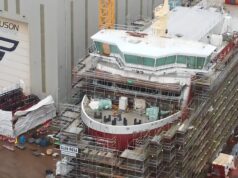
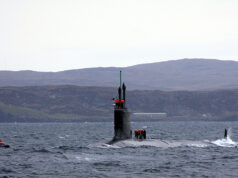
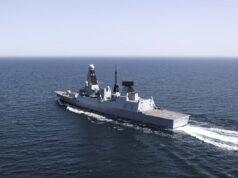

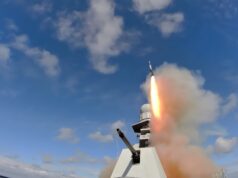
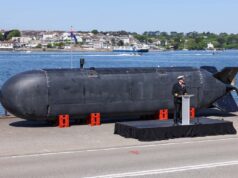
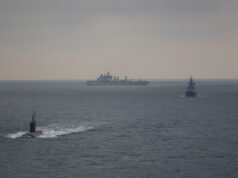
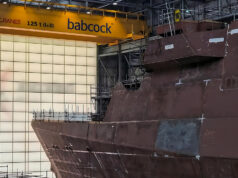

we have to build in UK its not a question to be pushed down the road if we keep the manufacturing expertise. easy win for Labour to say yes, to be built in UK
unbelievable
Probably won’t be this government ordering them
And it isn’t like she is saying anything that that last lot didn’t say either!
Totally repackaged ‘news’….
She talks a lot without saying much at all in reality. Bit like the whole Govt to be honest.
I would think it would be this government, they will need to be well along the way by 2030 at the end of this parliament.
They’re talking about finishing in the mid 2040s, and T26 won’t finish construction till 2035.
They could start initial build while the last T-26 is still in the shed especially as it will be in multiple sections I presume and just brought together there. Let’s hope there is a smooth change over whenever it occurs.
Hugo, the old sheds will be empty by about 2030 and the last T26 will be ready for fit out by 2031/32. So we could start the T83 program in about 2030 which would be about right as the first T45s will or should be replaced by about 2038. The whole program would be completed by 2048.
What does concern me is numbers and affordability. As much as I would like to see 9-12 T83s it will not happen. These ships look like topping 10-12,000 tons and have anything from 96-122 VLS cells. What I think could be achieved is 4 T83s and 8 T46s. The T46 would be a 8-9,000 ton 64 cell air defence with limited anti submarine ability based on either the T45 or the T26. I would prefer the T26 as the base line. One T83 and two T46s could be started at the same time and enter the fleet as a unit.
As Spyinthesky said I do hope that the T83 program will not be kicked down the road leaving the T45s to remain in service beyond there sell by date as we have with the T23s. By kicking things down the road means a loss of the skilled work force, training a new work force, and restarting production, all of which takes time and adds cost.
Or the next.
It’s not likely to take long to build two or three ships. Given current trends this is all we can expect. I can’t see that helping the ship building industry.
It depends how they are specced. I would not hold out hope for a >10,000 tonne, 128 VLS cell cruiser, as some people seem to be expecting. A more realistic option for the RN would be a slightly larger Type 45, with somewhere in the range of 72-96 VLS, and a small landstrike and ASW capability but a large focus on all domain AAW. That way, the Type 45 can be replaced one for one, and ship-building is maintained. It might also be more palatable for other nations – Australia for example.
It should be high tonnage and large, steel is cheap and space is valuable.
And with GP frigates like T31 on pirate duty, they can be dedicated to CSG duty only. Small batch would matter less then.
2040 is a long way off and traditional air defence systems are already looking dated against current threats. Not sure focusing on 100 odd VLS is the right focus, the focus should be on alternative options for dealing with missile and drone threats.
In addition surface drones are now a massive problem and no doubt by 2040 subsurface ones also.
Building around an improved t45 is a mistake in my opinion.
Oh “Eagle Says”….again. Dont hold your breath.
It will be interesting to see where the RN go with FADS and the T83.
It is worth remembering what the RNS wants FADs to be essentially it’s not just and air defence destroyer but a disagrigated set of systems for air dominance at sea in the littoral and over land, but also surface strike and the ability to destroy threats.
They have also said that the core will be a spiral development from the T45 sea viper system and upgrades.
With a T45 replacement siting in the centre of the system but the system being a lot bigger that just one core ship and instead having a wider net of sensor nodes and effectors.
What does this mean, well the very latest radars are immensely heavy and power hungry beasts…infact that’s one of the main drivers for the new Italian DDX destroyers essentially becoming 13500ton cruisers.
So it’s very likely that the T83 is going to be very large and over 10,000 tons.. what does this mean for numbers… maybe a drive down in numbers possibly only 3-4 ?
But as the RN is looking for a more desegregated system does this mean that the RN may be looking for a number of lesser AAW vessels to carry the desegregated sensors and capabilities…you can see this happening in the Italian with a future of two AAW destroyers and 2 exquisite 14,0000 vessels..but then a good AAW sensors and Aster 30s distributed across 19 armed frigates.
So I do wonder if we will see an order for 4 very big 10,000+ cruiser like vessels, then a number of smaller AAW focused frigates..maybe off the back of the T31 order.
I doubt we’ll see proper warships. More likely the aspiration is for low/uncrewed platforms to carry more missiles. And liable to get cut
Hopefully there will be overseas appetite for the type 83 too!
From who exactly
Australia for example – their Hobarts will age out at a similar time to Type 45, and if Type 83 ends up being a medium size combatant, instead of a gargantuan cruiser, it could be attractive. Especially if Mk41 is built in from the start.
Hobart’s are way newer
‘So it’s very likely that the T83 is going to be very large and over 10,000 tons.. what does this mean for numbers… maybe a drive down in numbers possibly only 3-4 ?’
I don’t see it this way – I think that whilst a larger combatant is possible, I doubt it will carry a large amount of VLS cells, and will instead be built with upgradability as a feature. Large power generation capacity, plenty of space for future systems, but delivered with roughly 72-96 VLS and a basic land-strike and anti-submarine capability. The focus will instead be on a all-domain air defence capability, probably centred around Aster-30 Block 1NT.
Currently, the Type 83 destroyer has a problem to solve: what will it utilise as its interceptors? Aster-30 B1NT, SM series, CAMM-MR? I think that will define capability and depth as well.
Not a large combatant ? But delivered with 72-96 VLS. Basic land strike, anti submarine capability, large power generation capability…Well if you add in the latest generation of AAW sensors your not getting a ship like that for less that 12,000 tons…that’s just the reality I’m afraid..
Having read that the T-26 is built to a near maximum exploited capacity ie little room for future upgrades that demand more space/weight it certainly seems that a more capable and complex Air Defence warship will need to be substantially bigger considering it will need added capacity for future capability from the start as compared to T-26 power generation alone will likely be a good bit more demanding and missile load will need to be a good bit greater than T-45 with greater missile range and more complex sensors and capacity for hi power lasers/microwave weaponry, probably substantial mission bays for flexibility too. Must admit 10000 tons is looking seriously tight to get that sort of wish list, but would surely even with compromises, be an absolute minimum to contemplate even with reduced manning and ai focused systems.
To be honest from what I have read with the future generation of sensors..even if you keep the number of missile silos down to a low number your struggling with a 10,000 ship…Italy started with a 12,000 concept and apparently they are now moving to 14,500 tons all driven by the requirements of the latest radar.
The weight growth margins on the Type 26 have been made public – as far as im aware the same cannot be said of the Type 45,these figures would need to be known and compared to make your point valid.
It’s published that the weight of the next generation Leonardo radar is what has driven the Italian DDx to the likely 14,000 ton mark..any next gen RN radar is going to be the same in weight and power requirements..physics is physics.
At this point they would be so energy hungry and huge, that with the state of the RFA and the tankers, I wonder how exactly they’d keep a fleet of ships including these behemoths and the carriers fueled, especially with frequent refueling necessary. Sometimes I wonder if these cruiser like ships would be better off with nuclear power generation. Especially considering the advances in small reactors, Rolls Royce’s SMR, and work in the dreadnoughts, I wonder if there would ever be potential for nuclear cruisers, and potentially retrofitting nuclear into the QES, considering they’d potentially get CATS. Of course, then we’d probably need an extremely good defence net and stocked ships, though I guess that’s the point. make these ships so valuable the bean counters give the go ahead to arm them to full capability. Oh well I guess I can only dream realistically though.
Which reminds me did anyone see or know of the Lockheed Martin proposed electromagnetic drone launch system that just happened to be shown in imagery on the QE class carriers sitting next to the ski jump. Haven’t heard anything solid written about this proposal as yet but it was talked about on a YouTube video this past week so information is otherwise sparse. Nothing included about how the drones could be recovered mind.
Also on the foredeck of T45!
Organic AEW, perhaps?
GA-ASI usually produce quite a lot of documentation about their designs (the endurance-payload curve of Mojave, for example) so if it’s a serious concept we should hear more soon.
A larger hull = bigger fuel tanks.
It is also worth remembering that the processing of all of these systems has become far more energy efficient overtime.
Compare the computing power of a computer in the 80s and the power it consumed vs a smartphone that can perform trillions of operations a second whilst using less power than a lightbulb.
Worth noting that Italy going for 2 DDX’s and 2 AAW DD’s isn’t a change from their policy, Italy has for a while now ordered Destroyers in Batches of 2. Also for their frigates and PPA’s: They might be able to carry Aster 30NT but given their small magazine size and the fact that there is no other interceptor they carry, I doubt they’ll be carrying many 30’s for area defence. With 16 rounds they really are just self defence AAW assets.
(Also I gripe at calling things Cruisers just because of their displacement. T-23 was Cruiser sized if we want to play that game.)
I would note that the horizon order was meant to be for 4, they had also planned for 4 Durand de la Penne class…but was all money and in the end the shifted to 2 Durand de la penne class, while keeping the Audace class running until 2006 and then only replacing the 2 Audace with 2 horizon.. but as you say because of those cuts to total class numbers they are now pretty much just following a retire the 2 oldest, build 2 new ones… it does mean they alway have a cutting edge couple of AAW ships and a couple of old horses…
But by the time they get DDX the horizons will be 23 years old so they will need another new class for 2040.
Combien de T83 vont être commandé ?
Nous esperons pour six, mais il n’y a assez d’argent alors nous devons attendre et voir.
Hope my French holds up all right?
Oh French, I thought you had a stoke for a minute!
Hopefully. I would like to see a cheaper hull to compliment the t83 and provide more flexibility. More would be better through.
Me too, I’d be happy with 4x 11,000 tonne destroyers with the absolute maximum radar (doesn’t have to be stuffed with VLS) as long as there is a side order of extra T31 based ships that include an upgraded radar setup and mk41.
I guess you don’t subscribe to ‘the rule of 3’!
At Graham, to be honest Graham neither does the RN, 8 T26 and 5 T31..
Mention of a commercial process when in reality BAE will be the only shipbuilder set up to deliver a warship the size and complexity of T83.
Rather than a notional veneer of competition between the various UK companies we should be acknowledging that the size/scope of our shipbuilding needs largely prohibits this and instead champion each having specialisms and working together to pitch for foreign business.
Perhaps we should be looking at a collobative programme with Japan. Their 13 DDX design is planned for the same time scale.
Or perhaps the Italian Navy DDX warship
DDX is being built for early 2030s, it’ll be a dated design by then
In theory T83 should be entering service in the mid 2030s, so two or three years out of a 20-30 year life span doesn’t make it dated, particularly when iterative upgrades can be made to sensors and software.
Italy got burned by us on the PAAMS project, I’m not sure they’d be hugely enthusiastic about collaborating again on Destroyers.
Japan doesn’t really do export. Australia will be one of the first. Even then I imagine it’ll be beyond our price range
‘“it is not yet possible to confirm where these ships will be built as it is subject to due commercial process.” ‘ – what happened to the idea that all warships would be built in the UK? I appreciate there is a difference between built in the UK and being built by UK companies – but that sentence does suggest a certain ambivalence.
That probably means where in Scotland they’ll be built. We all know it’ll be Govan. Even if BAe get another 5 Type 26s on their order books, no way will HMG give a contract to build 10,000 ton complex destroyers to Babcock. They’d rather have an excuse to delay spending the money anyway.
Ideal solution is maybe to share the work between BAE and Babcock’s, get the best of both worlds.
If BAE are contracting out blocks to Furgusson’s, I’m pretty sure they’d be willing to spread the love to anywhere with capacity.
Assuming that 10,000 ton destroyers will be procured…
Still, I think that BAE will likely get the contract.
Babcock at Rosyth is going to be have to be given something to do after T31 completes in say 2031-33. Shutting it down isn’t going to be an option. So a repeat of the T26/T31 hi-lo split is likely with 4 more complex vessels built at Govan and 2 Type 31 styles dig-a-hole-and-fill-it-in exercises to keep Rosyth going. Otherwise what is Rosyth going to do after T31. There obviously isn’t going to be a QE/PoW replacement as that project should have already started.
New OPVs perhaps, to replace Batch 1. They’re unlikely to get the MRSS contract, though.
Would be great if we got Batch 1 replacements, but I have a sneaking suspicion that that’ll be a cut. The Batch 2’s where originally supposed to take over the Batch 1’s after all.
Why would a QE-class replacement already be in the works? These ships are expected to serve into the 2060s perhaps even the 2070s. Therefore, 2040 is probably the earliest we can expect a replacement to be considered.
To be honest they don’t want to make any commitment that will ease any pressure on the SNP for the next election so even though we know where they will be built they don’t want it confirmed before they have to so that voters don’t conclude they don’t have to worry on any potential election or vote for independence. All a game of hide and seek really.
Rob. My point too. Sounds like she is unaware of our Naval Shipbuilding Strategy.
Rosyth, Govan, Belfast, Merseyside, plenty of places they could at least theoretically be build in the UK….
Type 83 tonnage around that of a Cruiser hope it doesn’t go the way of the type 82 just one built hopefully not as the QE class should be around for 50 years four at the max would be my guess fingers crossed please make it 6
Type 23 also had the tonnage of a Cruisers. Comparisons to ship classes from a different era aren’t very helpful.
Interestingly the USN does have a modern definition of a cruiser..it just does not bother calling any of its newer warships cruisers for political reasons…it actually uses the excuse that a cruiser by definition has a level of self repair facilities and if a ship does not have that it cannot be a cruiser no matter its size or power…hence the zumwalt 15,000 ton destroyer.
It’s also has a tendency to change designations..a lot of the Cold War US cruisers actually all started off with frigate and then destroyer designations before becoming cruisers ( basically because the political climate changed and the navy first wanted to hide how many cruisers it was building then brag about how many it had).
Some navies pretty much refuse point blank to even have destroyers and call everything a frigate….again mainly for political reasons.
As for the RN it pretends it has a logical approach..but has often made it up as it’s gone along…after all the type 41 was a AAW frigate, the Type 82 destroyer was in reality designed as an all round ASW/AAW cruiser…the type 31…well it’s a frigate but it’s got sod all to do with ASW.
Well it’s been a long time since I did my, lets call it what it is, rant, on surface warship categories, and why getting hung up on them in the modern world is kind of silly (and, not meaning offense, I think I last posted a version of it before you where posting here, so you might not have seen it before.
So Cruiser, Frigate and Destroyer, all three have really changed in the last couple hundred years. Frigate and Cruiser are the oldest. Cruiser having been a bracket category originally, that included Frigates, Sloops and other vesseles that “cruised” on their own on raiding, scouting, escort etc missions (As opposed to Ships of the Line). Frigate kind of went out of style in the 1860’s because, well, a Frigate was a ship that had a single deck of guns, and guns where getting too big for multiple decks, so even main surface combatants where becoming “Ironclad Steam Frigates.” So the differentiation became “Cruisers” vs “Ironclads.”
Destroyers where initially born out of the need to defend against Torpedo Boats (hence the name “Torpedo Boat Destroyer” which got shortened). They where small escorts designed to defend fleets against fast moving surface targets… and then became used to attack enemy capital ships with torpedos. So by WWI Cruisers where sort of the General Purpose long distance raiders and general purpose surface combatants, while Destroyers where close in surface escorts. And this was kind of all agreed on, and then formalised in Naval Treaties: this is where this BS about “This ship is cruiser sized” comes from because the Naval Treaties gave upper limits on Cruiser displacement that people carry forwards. Due to the arms race and needing more range, better engines, more guns, and better/more torpedoes Destroyers at the dawn of WW2 where already displacing more than some Pre-WW1 cruisers. (The original Daring Class destroyers displaced under 300t btw, so when people are like “This Destroyer is a cruiser” it’s very like…. “uhhhh… no.”)
By WW2 the need to defend against Submarines basically split the Destroyer line. ASW Escorts did not need to be fast, Submarines sub surface where unbareably slow, and surfaced still not very face), but they needed to be manuverable. They also had little need for deck guns and torpedoes. Meanwhile Surface escorts needed to be fast, over 30knots, have lots of guns, and torpedoes and didn’t have much use for Depth charges. So you had the traditional destroyers continue in the anti-surface (and by extension AA role) while the new kinds of destroyers where made to fight submarines. And this is where it gets annoying. (Also throughout the War Cruisers get a line of battle and convoy escort mission to fight off surface raiders as well).
As you said, the RN called anti-Submarine destroyers “Frigates.” Well kind of… they called the crash build emeregency ASW ships corvettes and then the purpose build ASW ships Frigates but same thing. The Americans did the same thing except they called them Destroyer Escorts, and then shenanigans happened. First of all after the War the needs from ASW ships changed, and a lot of Surface Escort style Destroyers where refitted to be ASW Destroyer Escorts/Frigates (and yes the US initially did reclassify them). Then the US decided that Destroyer Escort wasn’t a good name, and changed the name to Ocean Escort, and then copied the RN and changed the name to Frigate.
By this point the classification is already breaking down, the Destroyers are being required to cruise on their own, rather than stay near a fleet that will sustain them, and have grown in size to the point where, in practice, they are just cruisers. The line between Frigates and Destroyers? Well size, and to a certain degree, hull form is no longer relevant to whether or not a ship is a ASW or Surface escort, it’s more about sensors and quietening. So you can have a Destroyer, like an Arleigh Burke, do ASW work, or a Frigate, like a Type 23 do ASW work. In reality it really became “Destroyer is our big escort, and Frigate our small one.”
And that’s just the English speaking world. For example the Italians don’t actually call their “Destroyers” Destroyers, which would be “Distruttore,” they call them “Cacciatorpediniere” which litterally means “Torpedo Boat Catcher.” A hint to their origin. Germany has historically very rarely used the term “Destroyer” and certainly never really had any split between ASW and Surface Escort Destroyers (even in WW2 they where still using the term “Torpedo Boat” for some of their Destroyers). There seems to be a strong belief that Germany doesn’t like calling it’s ships Destroyers for political reasons, I’ve never seen an official source for that. What I have seen is sources stating that in German Classification a Frigate is a ship that is specialised in *either* Anti-Submarine Warfare, Anti-Air Warfare, or GP Anti-Surface duties, while a Destroyer is a ship that can do all three without compromising any mission set. (Personally I also feel that “Zerstörer” in German, Hamburg and Lütjens notwithstanding, is associated with specifically ASW specialised ships).
ANYWAY
The moral of the story is: None of the ship classifications now are hard and fast rules, especially when other languages are concerned, and even if they where, the role, size and shape of all three has changed enough in the last 200 years that picking an arbitrary point in time (and it’s always the 1930s) and saying “Well by this standard this ship is a cruiser” is pointless and silly, and whenver people do it, I delight in picking a different time period and doing the same comparison.
Essentially in reality all modern designations of large surface combatants and even some other large surface ships are really meaningless… as pretty much anything could be called anything… after all the RN even called a carrier a Through-Deck Command Cruiser, for political reasons and the Japanese maritime defence force actually do call a 26,000 ton carrier a destroyer… and the Russians call their carriers cruisers ( mainly just incase they wanted to send it into the Black Sea, bolt some missiles to it, call it a cruiser, squint a lot and you can deny your in breach of Montreux Convention when you sail a Carrier into the Black Sea).
So you can really pretty much pick whatever name you wish, after all that’s what all the navies do, and change their minds randomly as well and completely disagree with each other even when they have the same ships…the horizons are frigates in the La royale ( who refuse to have destroyers) and destroyers in the Italian navy.
In reality if you want to not have miss understanding and argument all you can really do is note it’s tonnage, capabilities and any speciality…but it’s so long winded and sometimes it’s just easy to say a cruiser sized ship and use the U.S. meaning of the word.
Except, as I said, “Cruiser sized ship” is meaningless, because technically T-23 and River B2 are “Cruiser sized ships.”
Although that’s historical cruiser sizes, in reality we still do have a pattern for what a modern western cruiser is, because the US still has them..and that’s a ship close to 10,000 tons, that can undertake all roles and has extensive facilities for extended deployment( deep stored and repair shops) as well as command and control facilities for a task groups lead role.
at the rate this labour government is cosying up to chine,, what are the chances that china might build them cheaply, lolol.
but seriously we do need more than 6, perhaps 10 to start with, just an idea.??
at the rate this labour government is cosying up to chine,, what are the chances that china might build them cheaply, lolol.
but seriously we do need more than 6, perhaps 10 to start with, just an idea.??..
We heard you the first time +
We need more competetive shipbuilding in this country overall. The major european defence shipbuilders Navantia/Damen/Fincantieri are also civil shipbuilders with a range of offerings, so they are busy building yachts/tankers/cargo/cruise ships when there isn’t a military order. They also build military vessels for e.g. columbia (lower tier stuff than T26 etc). These companies manage to retain skills, yards/facilities and be price-competetive.
However in the UK the only game in town for a major surface combatant is BAE and maybe Babcock, and they are exclusively defence contractors first, so they just sit around doing nothing till an RN order comes along.
Obviously the T83 order will share the work around, sections, hulls built by babcock and H&W or such work, but i expect BAE will be prime contractor, and they know that and are thus able to charge whatever suits.
Most of the European military ship builders are public sector organisations it’s why they are effective at supporting their Navies.
They should go to British yards , a no brainer . What we do need is a constant flow of ships to keep the shipyards busy and retain skilled workers . Is 1 destroyer and 1 frigate a year too much to ask ? After the debacle with keeping t23s in service a regular flow of new ships i just whats needed and id the quality is there overseas orders will surely follow
It is too much to ask, there is not enough yearly budget to build 2 escorts
Great to have 10 of these, sorry i mean 8 or is that 6…..sorry 4
Aint that the truth but hopefully with more automation we can have more with less crew.
I’m not a naval expert by any means but I was having a chat with a treasury official last year over some drinks about the lack of hulls in our navy. I said we need more and he said I need to justify the need for more vessels etc.
Anyway, I gave up on justifying why say 6 Type 42s weren’t enough and suggested that maybe we could setup a crowdfunding page to fund more building…at which point he became rather annoyed at the suggestion and stormed off.
Hopefully you meant “T45s” and not the “T42s”…lol…
Someone. perhaps you should have just told him about the rule of 3, meaning that of those six T45s, we could expect just 2 to be either at sea or immediately available for sea duty. Then remind him that we are a global player and really should be showing a presence in ‘The Seven Seas’!
More automation = less crew
Less crew = fewer repair teams
Fewer repair teams = ship is more likely to sink
Fewer ships because of sinkings = starving United Kingdom population
Starving population = lose war
See Germany 1918.
I have an awful feeling it will be less than 6….
3 or 4 fabulous ships,10,000 tons plus,Dragonfire,Next gen missiles,Hypersonics,BMD capability,multiple drones,….£1.6/1.7bn a pop?…Too expensive to risk in conflict surely??Should go to DAMEN with £6 billion and see what the RN could buy?Part ex the carriers?
Basing my assumptions on previous purchases, how much work will there be for three Destroyers?
In reality the RN should have 10-12 area defence platforms, but these don’t all need to be exquisite infact if they can generate 2 exquisite platforms for the carrier battle group that would be adequate…so 6 exquisite 10,000-14,0000 ton hulls would do…that mass could then be provided by GP frigates with a reasonable radar and slightly longer range missiles. So maybe as part of the FADs providing the T31 class with a slightly upgraded sensor set and an extended range area defence missile, CAMM MR as an example. Maybe do this with the T26 as well and the RN would have a profoundly good set of escorts for area defence with an exquisite + mass mix.
That is the way the Italians are going,they will have less dedicated area defence platforms than the RN, but will have more total areas defence platforms as well as ABM platforms, will have a good mix of capabilities, but a hell of a lot of area defence capable and ABM capable platforms with capability spread across a lot of platforms.
2 DDX profoundly exquisite and significant depth of missile numbers ASTER 30 NT ABM capable
2 Horizon exquisite but less depth of missile numbers ASTER 30 NT ABM capable
2 FREM evo slightly below exquisite limited missile depth ASTER 30 NT ABM capable
7 PPA slightly below exquisite limited missile depth ASTER 30 NT ABM capable
10 FREM effective area defence. Limited missile depth ASTER 30
Are you saying we need to order extra T31-EVO with a miniature version of whatever radar BAE produce for T83?
Sounds a decent plan, just so long as they all get ordered. You probably need 4+4 mix for any effective expansion of AAW.
I’m a firm believer that the long term plan should be to get the RN back up to 30 major surface combatants and then go from there. 30 was the number that the defence review identified from the evidence was needed in a peace time world.
So it should have been 10 AAW destroyers, 10 GP frigates and 10 ASW frigates.. but as air defence becomes more distributed ( ASW and GP frigates can now generally do some AAW area defence work) I would say you could drop down on the specialists AAW destroyers as long as you kept general hull numbers up ( which was the core mistake Labour did in the 2000s to pay for the sand box wars..they dropped the AAW numbers because one T45 could do the job of 2 T42s…air defence wise..but you still needed 2 physical hullls for all the other jobs a ship does)
So what I think the build programs should aim for
6 very high end AAW destroyers at 10,000+ tons ( you need it that big for modern sensors) ( built by BAE so from 2035)
9 T26 ASW ( extend to a batch 3 for 2 extra hulls, they would probably be able to do this and lay down the first T83 in 35)
9 T31 variants I would simply keep Babcock rolling out T31 variants in a spiral process..with steadily increases mid capability area defence based on the ER/MR CAMM family.
6 MRSS, make the MRSS its own GP frigate..15,000 ton hull for company level raiding, but with CAMM, medium gun ( 5inch) possibly NSM for long range precision strike. When it’s not doing amphibious work it can then use its well deck, flight deck and mission space as an autonomous vehicle based patrol, mine warfare and littoral control ship.
*5 PPA’s, and the key point is ASTER 30NT Capable with a tiny magazine, that also have to carry Aster 15’s. In reality Italy’s Frigate fleet is not an area defence asset, but just there to protect itself.
It will be seven, they are just finalising on an EVO PPA which the order will be for 2 to replace the 2 sold off the production line runs. There is also still the option and paper only plan for a total of 10, but this is more like the UK T32 plans….
As for limited magazine…yes only 16 for aster 30 NT, but it has a 127mm and a 76mm medium gun and the Italian navy does eqiup its units with dart guided ammunition which essentially gives the equivalent of a lot of short range AAW missiles ( effective out to 8km against high G manoeuvring supersonic missiles).
It’s about distribution…essentially because the Italian navy has a lot of platforms that can do long range area defence it will have a highly distributed system.. the individual ships become less important and less of a critical failure point. They can also more safety shove ships far down the likely axis of attack….essentially if a RN and Italian task group both have 2 exquisite AAW platforms, 2 ASW platforms and 2 GP platforms..the Italian battle group will have a wider area of coverage from its platforms long range area defence missiles and ABM capable platforms..because essentially every single one of the Italian ASW and GP ships are also long range AAW and ABM platforms..yes limited in long range AAW war shots but they at least have them…. The core AAW destroyers are the ones that will provide the deep well of area defence war shots…and the battle group then also potentially has an insane number of 76mm guns firing a staggering number Guided DARTs… your theoretical 6 escorts ( 2 AAW, 2 ASW, 2 GP) would have 10 76mm medium guns able to rapid fire guided rounds out to an effective 8km intercept point.
Essentially if you look at the two nations carrier or optimised surface groups around the mid 30s…
the Italians will have Aster 30NT probably around 136 shots, Aster 15 around 104 shots and then the 10 76mm with guided rounds and 4 127mm guns as well as 12 25mm close in gun systems.
The RN will have 96 aster 30 block 1, 176 CAMM, 2 57mm guns possibly with guided rounds, 2 5inch guns, 4 40mm guns, 16 close in gun systems
The Italians win on ability to distribute, manage threat axis at a greater distance as well as increased mass of longer ranged shots, density of ABM defence, and increases mass of shorter range shots. 5-10 KM probably equal dibs on close in and the RN will with mass of shots at ore medium ranges.
It really isn’t. As I said, they can’t do Area defence without compromising their own defence, so the idea that Italy is going to have some sort of distributed ABM naval shield is just fantasy, not unless they order a lot of ships with actual magazine depth. No single combatant is going to be in a position to engage a threat that isn’t directly aimed at itself for risk of going empty.
Also not sure where you are getting the idea for the complement of an Italian carrier group having that many escorts, since the PPA’s are aimed at replacing their OPV’s, not being carrier strike group escorts.
Hi Dern.. the PPA is a frigate and ASW corvette replacement (Lopo and Minerva) not an OPV replacement, it was also going to be an OPV replacement in its light configuration but the Italian navy changed its mind and is only going to have it as a frigate/ASW corvette replacement.
.So the PPAs are most definitely frigates in the Italian navy and the Italian navy is upgrading them all to the frigate standard, the latest two EVO versions are planning to be ordered with 32 silos in the bow and another 32 silos mid ships where the 20ton crane was… the term OPV is simply now a misnomer and miss interpretation as they were always multi mission ships…and the latest variant is likely to 64 missiles.
The Italian navy is replacing its old OPVs fleet with an array of different OPV classes
The six old constellation class OPVs are being replaced by 6 PPX OPVs, 2500 ton combat capable OPV with a hangers for a medium rotor and autonomous vehicle, 76mm medium gun with Dart guided rounds, 2 30mm CIWs and topped off with 12 CAMM ER.
The 4 Comandanti OPVs will be replaced by the Modular and Multirole Patrol Corvette in the 2030s…no design for this one but it will be a 3000 ton OPV with SAM and ASW capabilities.
Also yes a PPA would run its silos Empty to protect the capital assess..in the end it’s what they are for, up to and including manoeuvring to put themselves between the carrier and the threat..I also think you are underestimating the performance of the DART rounds, they are the ships self defence, they are proven to be able to engage and destroy high g manovering supersonic missile threats with an accuracy of around 80% ( as accurate as a SM2 ). There is also because of this no indication that the Italian navy will be loading its PPAs with aster 15…its only stated Aster 30 NT….and it’s not burning ASTER 30 NT missiles as self defence missile for a frigate…that would be a bit of a waste.
What I draw from this is that as well as packing in mk41, we massively need a standalone launcher for CAMM-MR to exist for arming frigates for the area defence role (Should be possible unless MR abandons cold launch). Even with the radar limitations of our frigates, having the ability when working alongside destroyers to contribute to area defence is going to be really important.
Also the necessity of getting guided rounds for 57mm and fitting them as widely as possible (MRSS, T83, maybe even the carriers) as a last-ditch weapon now that Sea Wolf as a pure PDMS has been replaced with CAMM as a LAADS.
Probably won’t be the most popular idea, but what about a “DDG AUKUS”? Try to see if the US, UK, and Australia could share a common hull? Hopefully drive down costs through economies of scale. Downsides would be UK may have to adapt Aegis, though perhaps the CMS (and most likely radars) could be modular? As for missile count, I would say cap it at 96, and use drone ships carry more cells like what the USN (among others) is toying with.
USN will always make their own thing
“Eagle speak.”
She rarely gives anything new, just repeats previous grandstanding.
Do any of these people actually have any knowledge of their brief beyond what her advisors feed her?
Is it just me or is the objectives of building warships to deter enemies or to provide jobs. I’ve absolutely no problem if it does both it’s just there always seems to be a focus on jobs with this Government.
Mark. Agreed. Nearly all political pronouncements about new builds start with a lengthy first paragraph about how many jobs will be created. You are lucky if they say anything about the Threat that generated the Requirement or the capability in detail that the new platform will deliver. I have noted that CDS is now doing this which is alarming.
Agree it should be both at the same time, you need an industry that builds efficiently good effective warships…but that means your getting the correct number of effective warships.
To be Fair to them I think it’s more about what the public think…if they say
“We are going to spend 10 billion on 6 cutting edge 12,000 AAW destroyers to combat china in the pacific, Iran in the gulf and western Indian Ocean and Russia in the high north”…the vast majority of the voting publics would simply “ what about my GP practice I want that first, second and third, f%£k your vanity ships….”
So instead they lead with what it will do for economic growth, and the mumble the bit about china Russia and Iran.
Yes it’s irritating for those who are a bit more geopolitically Woke..but most people are not.
All governments do the same. You see it with US press releases on defence kit, announcing how much will be built in each state and how many jobs supported.
If the out of service date for the T45’s remains 2038 (as reported on this site – https://ukdefencejournal.org.uk/mod-confirms-when-type-45-destroyers-will-leave-service/) then that suggests either a gap between T45 and T83, or that T45 will need to be extended. You can’t be building ships ‘into the 2040’s’ to replace ships retired by 2038 on time…
I hope it’s the 2nd as the T45’s won’t be that long in the tooth by 2038, and will only have all had the CAMM upgrade fitted by 2032.
Would be nice to see some consistency though.
Slightly off topic but I will ask anyway. Is the Type 32 dead? I know the official line will be wait until the SDR is published but for the longest time there has been precious little heard about it.
Personally I think it will never see the light of day but I would love to be proven wrong – we need as many hulls as possible!
This site reports quite frequently on the progress ( or lack thereof ) of the Type 32 Boris Frigates .
A mooted Destroyer design would be nice. There can never be enough space for missiles. UK has 5 now that was reduced from the original requirement. We might get 3 next time. Ongoing ‘defence reviews’ and all that claptrap. I for one would love to be proven wrong.
We have six destroyers. Daring, Dauntless, Dragon, Diamond, Duncan, Defender.
Daring has been out of service 7 years
Talk about “Armchair Admirals” and their “Fantasy Fleets”.
None of us on here have any Idea what T83 will be yet.
It called discussion.
Yes, A discussion had by Armchair Admirals about their Fantasy Fleets. I’m sure there will be thousands more to come.
They will be built on the Clyde 100%. BAE. Have doubled the size of their facility and the Type 26s will be finished. They know whats coming.
Just how big of a crew will these things need given the level of automation onboard will have advanced by the time we start building them